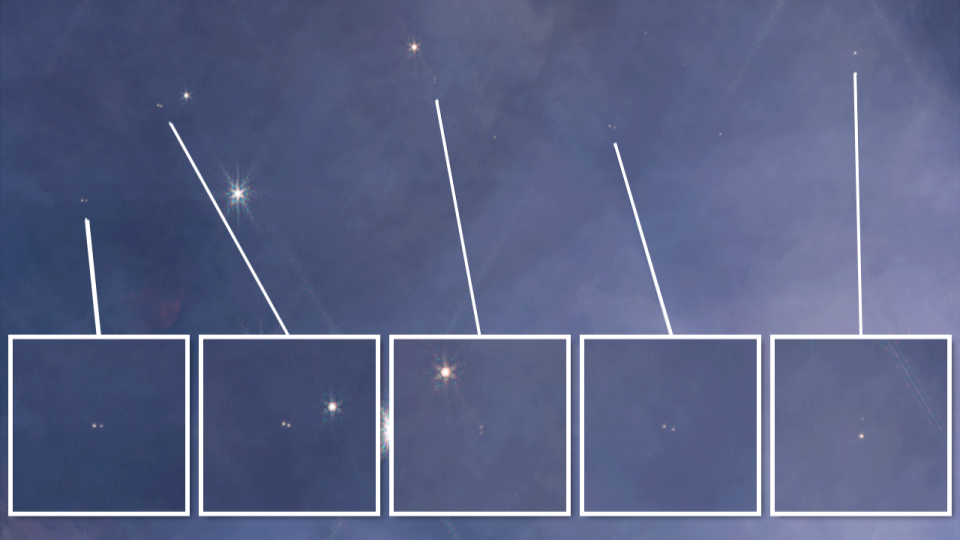
One of the new weird things planetary science has to explain is the preponderance of free floating planets that JWST has discovered. In October 2023, Samuel Pearson & Mark McCaughrean posted to arXiv a pair of papers highlighting their discovery of 540 planetary mass candidates in the Trapezium Cluster and the Orion Nebula Cluster. 9% of these objects were remarkably found to be orbiting one another as planetary binary systems – something theory hadn’t anticipated.
Because astronomers gotta acronym, these objects were named “JuMBO”s for Jupiter-Mass Binary Objects.
And a new paper published in Nature explains how the crowded conditions in star forming regions can combine with chance planetary alignments to yeet pairs of planets into the voids between stars.
Here is what is required:
- A forming star system must have a pair of large planets
- At the moment that another star side swipes the forming star system, those planets need to be on the same side of their star
- The combined forces on the planets need to leave them bond to one another and not to either star
And, in high density star forming regions like Orion, these kinds of violent interactions are frighteningly common.
Yihan Wang explains, “Understanding the formation of JuMBOs helps us challenge and refine the prevailing theories of planetary formation. Our simulations demonstrate that close stellar encounters can spontaneously eject pairs of giant planets from their native systems, leading them to orbit each other in space. These findings could significantly alter our perception of planetary dynamics and the diversity of planetary systems in our universe.” Wang was first author on this Nature paper, which they coauthored with Rosalba Perna and Zhaohuan Zhu.
